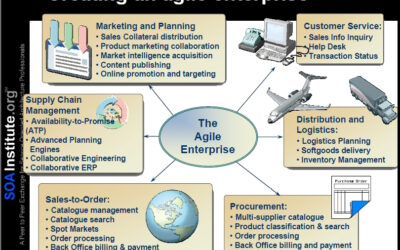Today’s enterprises face a common challenge: optimizing business processes and their operational effectiveness. To meet this challenge, EMC created the EMC Documentum Process Suite, a comprehensive business process management solution for analyzing, modeling, orchestrating, and optimizing a wide range of enterprise processes involving people, systems, content, and data.This white paper is intended for business executives and CIOs who are responsible for improving the quality and efficiency of business operations. Readers will gain insight into the following topics:
Articles by: BPMInstitute.org
Tipping Points Round Table Series – BPM & SOA: Exploring The Relationships
This round table is the first of a six-part Round Table Series exploring the relationships that exist between BPM, SOA, BR, OP, and BA.
Tom Dwyer, VP of Research, BrainStorm Group and Editorial Director, BPMInstitute.org
BPMS Watch – Tibco Gathering Steam in BPM
Recently I had the chance to visit Tibco’s headquarters in Palo Alto for an in-depth briefing on the company and its place in the BPMS landscape. For most people, Tibco is synonymous with message bus-based integration – the company’s name stands for The Information Bus Company – but like others who have evolved from EAI, Tibco today is trying to build its reputation around BPM, SOA, and Business Optimization (i.e., BAM and analytics).
Reforming the Development Process
Like so many other things, development (as in R&D) will have to be rethought over and over again as we move deeper into the new century. More people, more markets, more competition; new technologies, new aspirations, new opportunities – nothing is stable for very long anymore.
Case Study: Flexible Analytics and Intelligent Monitoring In the ETL Process
Jay Yusko is a Consulting Engineer in Application Architectures for Information Resources. He has an MS in Artificial Intelligence from DePaul University and a Ph.D. in Artificial Intelligence from IIT. His research has been in the area of Ontologies and Ontology Inference Engines. Jay developed rule-based systems at Bell Laboratories, Navistar and United Airlines.
The Manager’s Role in Performance Support
In her book, Electronic Performance Support Systems, Gloria Gery popularized the notion of designing technology to assist workers in performing tasks, writing about the growing use and importance of electronic job aids such as online tutorials, directories, help menus, technical support and the like for users of laptop and desktop computers.
Case Study: The Rules of Automated Underwriting: Blazing a New Trail for the Auto Club Group
Michael Koscielny has been using business rules technologies and strategic practices to transform and integrate the complex insurance underwriting process at Auto Club Group, formerly AAA Michigan. Koscielny has been utilizing business rules management software in the insurance industry for more than 20 years.
The sales and service initiative of the Auto Club Group identified the need for an automatic underwriting solution for new business functionality.
BPM Requires the Right BPMS
To many people, BPM is essentially a management discipline that replaces traditional organizational performance metrics around functional stovepipes with new ones based on cross-functional process thinking.
BPMS Watch: What if BPMN Were a Modeling Language?
Lacking support for fundamental concepts like human tasks and subprocesses, BPEL has become a favorite whipping boy of BPM vendors and consultants. But for all its faults, BPEL enjoys something that BPMN advocates can only dream about: an XML storage and interchange format that makes sense. It’s often said that BPEL is an XML language not a graphical notation, but the reality is that graphical BPEL design tools all use more or less the same notation, based on a simple mapping to native BPEL language constructs: Receive, Reply, Invoke, etc.
In the Agile Enterprise, Responsiveness Trumps Efficiency
The global economy is changing the rules in the game of business. For the last 200 years or so the most important consideration was efficiency; producing products for the lowest cost. But now we are all part of a global labor force and there are countries in Europe and North America that can no longer compete on efficiency alone because their labor costs (also known as our salaries) are so high compared to labor costs in countries like China, India, Russia, Poland, the Philippines, etc.
What is to be done? Will the economic boom for some countries be economic doom for others?























